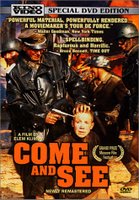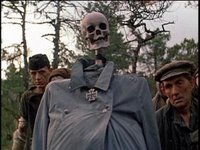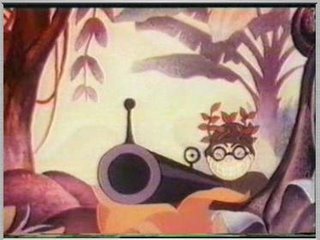Suspiria (Dario Argento, 1977)
 the film begins as an Italian giallo (pulp thriller) with a series of murders staged in the baroque manner of a musical. But Argento reminds us that film isn´t only the story told, but an experience. What he reveals isn´t a masked killer but a world of supernatural forces and malignant witches.
the film begins as an Italian giallo (pulp thriller) with a series of murders staged in the baroque manner of a musical. But Argento reminds us that film isn´t only the story told, but an experience. What he reveals isn´t a masked killer but a world of supernatural forces and malignant witches.
The film is Italian, takes place in Germany and is in English, in the tradition of Italian film making the film?s sound was dubbed and post-synchronized, therefore picture and sound don´t necessarily sync. The movie is about an American woman who goes to study in a ballet school in Germany, something evil is afoot and the corpses start piling up.
The color and music of the film create an overwhelming atmosphere that the viewer becomes a part of. The ballet school the film takes place in is unrealistic in itself but creates an atmosphere of terror and beauty at the same time. The score was made by Argento´s band, Goblin, it is highly unusual but sets the film in a very fitting soundscape. It has earned a cult status.
The film is a relatively late entry in the European horror sub-genre of the film. It´s very stylized and Argento is obviously under the influence of his mentor, director and cinematographer Mario Bava. It can be seen in the photography which is a direct tribute to Bava, and Argento makes his own.
The film is a Grimm?s fairy tale, stylized madness from beginning to end, that draws the crowd into the insanity.
 the film begins as an Italian giallo (pulp thriller) with a series of murders staged in the baroque manner of a musical. But Argento reminds us that film isn´t only the story told, but an experience. What he reveals isn´t a masked killer but a world of supernatural forces and malignant witches.
the film begins as an Italian giallo (pulp thriller) with a series of murders staged in the baroque manner of a musical. But Argento reminds us that film isn´t only the story told, but an experience. What he reveals isn´t a masked killer but a world of supernatural forces and malignant witches.The film is Italian, takes place in Germany and is in English, in the tradition of Italian film making the film?s sound was dubbed and post-synchronized, therefore picture and sound don´t necessarily sync. The movie is about an American woman who goes to study in a ballet school in Germany, something evil is afoot and the corpses start piling up.
The color and music of the film create an overwhelming atmosphere that the viewer becomes a part of. The ballet school the film takes place in is unrealistic in itself but creates an atmosphere of terror and beauty at the same time. The score was made by Argento´s band, Goblin, it is highly unusual but sets the film in a very fitting soundscape. It has earned a cult status.

The film is a relatively late entry in the European horror sub-genre of the film. It´s very stylized and Argento is obviously under the influence of his mentor, director and cinematographer Mario Bava. It can be seen in the photography which is a direct tribute to Bava, and Argento makes his own.
The film is a Grimm?s fairy tale, stylized madness from beginning to end, that draws the crowd into the insanity.










